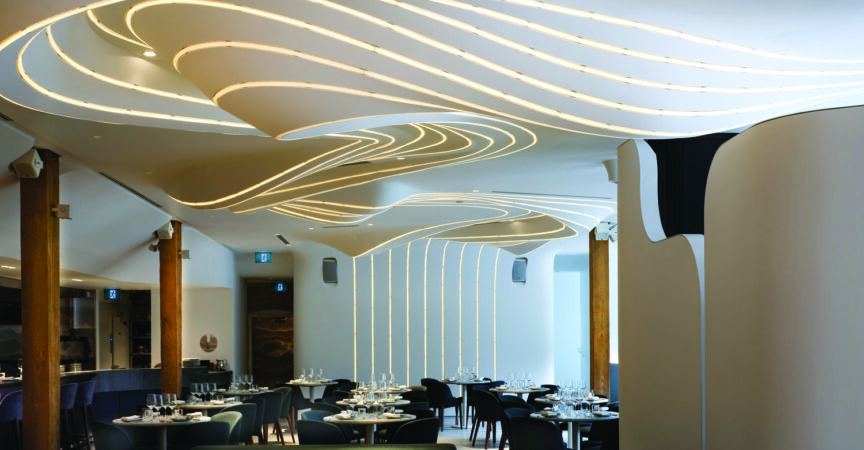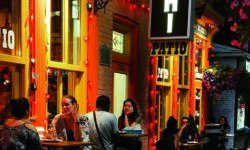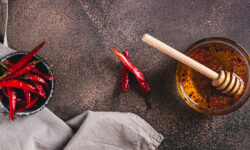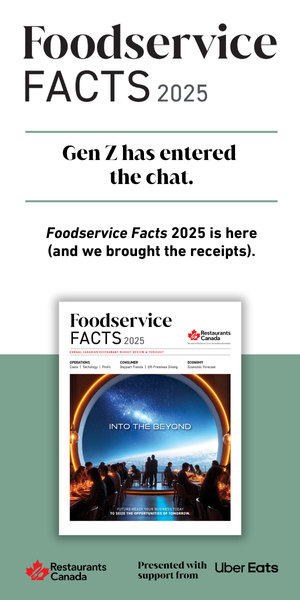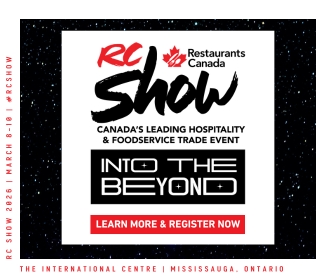The Conversation: Robin Goodfellow
Celebrated bartender and restaurateur Robin Goodfellow on human behaviour, Prochaska’s Stages of Change and his journey so far
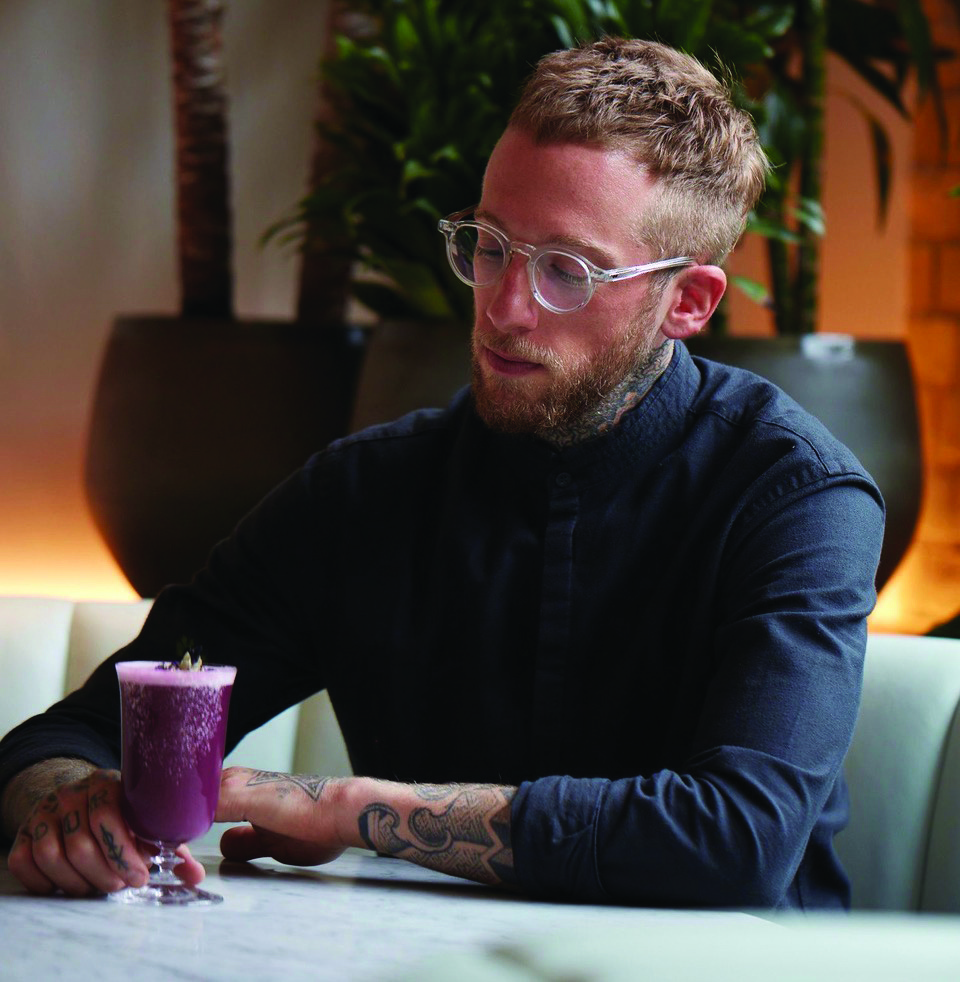
Robin Goodfellow is the mastermind behind VELA, a bar restaurant at King and Portland in Toronto renowned for its unique fusion of bygone hospitality and modern sustainability. As the innovative founder of Little Bones Beverage and the visionary behind the celebrated Bar Raval, Pretty Ugly, and Harry’s Burgers, Goodfellow has etched his signature precision and creativity across Toronto’s nightlife with iconic establishments such as Paradise Theatre, Osteria Rialto, The Biltmore, Sara, Buena Copa, and beyond.
His journey has taken him across North America and Europe, where he has honed his craft alongside the most esteemed leaders in the beverage industry. Known for his deliciously bold creations, Goodfellow is a maestro of taste who is just as passionate about shifting industry paradigms, enhancing operational efficiency, and elevating the overall standards of the beverage and hospitality sectors.
At the heart of VELA is a commitment to a holistic approach to sustainability that transcends the environmental aspect to encompass financial, ecological, emotional, and psychological well-being for both staff and patrons. In a world hungry for authentic connection and balance, VELA isn’t just a destination; it’s a movement, redefining the essence of hospitality with every glass raised and every plate served.
VELA reinvents American classics with a nod to the opulent hotel dining of yesteryear, offering dishes like a plant-based wedge salad and inventive twists on pasta and steak. The curated beverage selection features a wine list that spans champagne, skin-contact varietals, and local Ontario vintages. But Robin Goodfellow’s bar is where his creative cocktail assortment ranging from sparkling concoctions, vacation-inspired spirits, movie-themed mixes, and alcohol-free options, introduce guests to the flavours and precision that elevate bartending skill to an artform.
MM: Was hospitality a career choice for you or a series of happy accidents?
Robin Goodfellow: Actually, I never wanted to be a bartender. I was studying kinesiology at University of Toronto and was pretty sure I wanted to be a chiropractor and then, after first year, I knew I didn’t want to do that.
I didn’t really know what I wanted to do, but I knew I loved health. Eventually I got into a more macro-level health, thinking about how to make certain populations healthier by messaging or policy and that led to my Master’s degree where I got really good at changing macro-level behaviours and won a national undergraduate research award. That’s what slung me into grad school and I spent many years figuring out how to change mob mentalities for the better— like trying to get people to quit smoking or to eat better or exercise. Getting people to eat and drink cool s*** is way easier.
I was bartending during school to make money, and after grad school was done. I was like, “F*** this. F*** academia.” I decided to go back into bartending and hospitality, and it turned out my training at U of T made it pretty easy to run bars, manage humans, see gaps and trends and change people’s eating and drinking behaviours. So, I became a bartender and then I became a better bartender until I became a manager. I saved my money and
got really diligent and focused on applying my academic background to bars.
MM: You were advancing your career, but approaching it a little like a human behaviour study?
RG: I guess so? I formed a committee of people I felt I needed to learn from, and to understand what I needed to learn and experiment with, and what people really wanted at different times. It concluded with me being part of the opening of Ursa on Queen Street, which is a very cutting-edge restaurant. It’s very elegant and fancy and, as that experiment went on and we started to slow down at Ursa, and I understood that people needed to have a good time, to eat and drink nice food, but not necessarily at so expensive a place. That’s when I started looking for a snack bar and we created Bar Raval. I thought it would be a little café in the day and cocktails and dinner at night—a snack bar—but it became much more than that.
I don’t understand demographics the way most people like to understand them, like asking: Who’s your target audience and so on? My mind immediately goes to a circle.
MM: It sounds a little like you’ve leaned into Prochaska’s Six Stages of Change…
RG: Oh man, don’t reveal my secrets. I teach that to some of my managers but yeah, the stages of change is key to my success. I want to know where people are on the “level of acceptance”. Do they want to eat nice food or are they good with fast food? Do they want to be shown cool stuff and are they at the action stage or are they pre-contemplation? That’s how I figure it out and that’s why the places I’ve made have been so successful. I’ve been very fortunate. I don’t see a 30-year-old versus a 60-year-old as a monolith, I see them at stages of acceptance.
MM: That’s really weird, yet strangely applicable.
RG: Bartending was always my passion and fun, but I’ve always been kind of an octopus—I always added in way more tasks and interests. Design became a passion after I started having the luxury and the privilege of getting to design spaces and bars. That’s just been the icing on the cake.
Also, sometimes the stages of change can be a negative thing. I don’t do JOEY and I’m not Oliver and Bonacini. It may help them to focus on demographics because they deal with such high scale and volume they want those statistics. Personally, I believe everyone is just a few good experiences away from a boozy, stirred weird Mezcal drink with frankincense and leather in it, as opposed to, “I just want a Cosmo.” That’s my weakness and my strength. I think I’m meant to do small, unique experiences that change people’s way of viewing the world, whether it’s just how they eat or whether it’s how they view sustainability or equity. I like to open up the minds of people who are willing, but I’m not as good at giving the mass public what they expect.
MM: So, you could say you’re almost a kind of an experiential therapist, moving people away from the familiar and into openness and discovery. There’s a trust and understanding of the intended purpose or philosophy of the experience that allows you to move people gradually along a well-plotted and planned trajectory based on the individual?
RG: Exactly. I see that I see the standard deviation curve as more of a slide or a roller coaster. I can definitely understand that a lot of people see that as fixed and view humans as stats or line items, but I see it more like you take that curve, you put a little seat on it, and someone’s going to slide from wanting an Old Fashioned to being ready to explore what’s on the other end of the scale. They’ll be open to trying something very experimental.
I can’t stop seeing it as a sliding scale and believing an experience can change human behaviour. A lot of people in this industry would argue that success comes from giving people what they want, but I lack that.
MM: Audiences are more fickle than ever, and it’s arguable that, due to the influence of social media, demographics are becoming less relevant than psychographics. What are you seeing? Is the reliance on trend-chasing or seeking out the common denominator in an audience a race to the bottom for this industry?
RG: Well, yeah. As an academic, with social media and what I like to call the “plagiarism machine” TikTok, it’s tough to understand what’s happening because we were told not to cheat and copy or at least give credit where credit’s due because we all stand on the shoulders of giants.
This psychographic scale you’re talking about means that operators have to understand as they grow their business that other people can just take your stuff and regurgitate it too. What does that leave you with? You’re not on people’s minds anymore. And, if you look to the success of others to build your place, you just did the same thing everyone else did. It’s taken me years to explain this approach to not only my managers but my business partners. This thinking goes deep into some unwritten stuff that guides a lot of my success. It’s very fun to talk about.
MM: Can you share the evolution of your concepts that led to VELA? What did you learn along the way that brought you to this moment?
RG: That’s a long story, but I’ll give it a shot. Ursa was a cutting-edge restaurant—fully foraged, fully sustainable and way ahead of its time. We were all like 29 or 30 but I started as just a bartender and became bar manager, then GM, and then partner. It’s kind of a history of Toronto and I think it’s kind of where the city is going again: Ursa was so good, and we won Best New Restaurant and came second on the 2012 en route list. Edulis was number one and they came in that afternoon while we were prepping to apologize. Ursa was just so cutting edge it was assumed that it was the next big thing and then, two years later, had just finished an 11-course tasting menu experience on New Year’s Eve. I looked in the books at the next day and we were slow every day until Valentine’s Day. I realized that we were an occasion restaurant. That was a problem.
I think people need to be able to eat foraged, sustainable food. We had a farm in Meaford, we grew all our own herbs, everything was Scandinavian, minimal, molecular—this is 2012-13. This was way ahead of its time.
We always joked that it was two years too soon for everyone. We wouldn’t serve “vegan food,” but we’d serve vegetables as the feature and people wouldn’t get it. So I said we needed to start selling more affordable food, but with the same philosophy and same ambience to open it up to a wider market, but my partners didn’t want to sell appetizers for less than $20, which is hilarious now because everything’s over $20. They didn’t want to do what I felt was important for Toronto, so I started looking for a cocktail bar-snack bar. My buddy Mike Webster was working at Bar Isabel, and we were very close, so I joined forces with Mike and Grant van Gameren to open Bar Raval. We got a location in 2014 and opened nine months later.
We all knew Toronto needed something that was open all the time and good all the time. We thought it would be a café in the day and cocktails and snacks at night. When we opened, I knew I’d been right. People wanted to go out and spend to their means and interest—it could be $8 to $80 or $300. We were having people spend $300 on tinned seafood, standing without reservation. Because we had the three of us, we had the confidence to spend all that money on mahogany and the beautiful design. When we opened Raval on Valentine’s Day 2015, I had $27 dollars in my bank account. We basically put everything we had into that place because we believed
Torontonians want to eat and drink this way, and that they’ll come multiple times a day. It was a home run. We got paid back in six months, even though we took a ginormous risk.
But then, I started looking for a cocktail bar because Raval was not the cocktail bar we had imagined. Mike and I are bartenders, and we needed a bar where drinks are the focus. Raval was becoming a restaurant and a full venue and its whole own thing that to this day is very unique in Canada.
Mike and I decided to do a dive bar and Grant felt obliged to be a part of that. I found a location in Parkdale, and we opened Pretty Ugly about a year later. It was different. I wanted to build a bar that functioned like a Lamborghini, with a dive bar in front. While we were building Pretty Ugly, Harry’s fell into our lap. We were supposed to open Harry’s in April 2016 and just have a quick turnaround and Pretty Ugly was supposed to be September, but we ended up opening both the same week.
So, I was 31 when I opened my second and third establishment in the same week. We had Raval, which was super busy all the time. We had Pretty Ugly which was also very busy, but more late night, and we had Harry’s, which is a great family spot.
MM: That’s incredibly intense. Was it all you’d hoped it would be?
RG: We were off to the races for sure, but while bartending was still fun, that’s when life started to get a little more difficult. We had some partner frustrations and some changes, and I started to notice how restaurants were starting to become very successful in the King and Portland Street neighbourhood.
One of my oldest friends is a very successful businessperson and an amazing CEO. We always wanted to open a hotel together, so we thought we’d go larger. Small spots are great, but when small entrepreneurs are presented with a real estate option, we never considered buying the building, we never tried to negotiate rent, and we never analyzed the rent compared to the market on a city scale. Whereas if you go to like a big location, like VELA’s, you have commercial landlords, and the rent is relative to the last deal they signed. So, I started to notice at Raval, we were overpaying per square foot because the independent landlord asks for an amount and we just work it into the business plan—how many cocktails do we need to sell on a Friday? How many seats and what’s the guest check out we need to survive? You never think, “I shouldn’t be paying $160 a square foot” at College and Palmerston or Queen and Dufferin because King and Portland, the most population-dense or high-traffic area is only $78 a square foot. So, I thought, “That’s why bigger restaurants don’t have the talent that all these West End places have. I think they’re just getting over that investment hump”.
I had all these small spots, so I thought: “let’s go high-quality with a unique style of service and let’s change the game at King and Portland,” but we were missing one thing: Amanda Bradley. Coming out of Alo having recently had a child, she was ready to own. Raval was named best bar in Canada pretty consistently and Alo had been best restaurant in Canada, so I thought it would be a great combo for the best operator in restaurants in Canada to meet to do something with the best bar operator in Canada.
We took the lease in December 2018, started building early 2019 and were ready to open May 2020, when the pandemic hit. I got absolutely decimated. I no longer own Bar Raval, and Pretty Ugly got shut down two or so months after the first lockdown because our landlord rushed to the bank with post-dated checks. I entered two lawsuits immediately and VELA was delayed until we finally got to open July 2021 when it was patio-only. We built this beautiful, enormous restaurant that was meant to be a modern-day Copacabana. We were shut down for 20 months and didn’t get to bring people inside until October 2021. We had plastic barriers everywhere and we couldn’t even play live music unless we built this huge contraption—it was just punch after punch.
We dealt with all of that and when VELA opened up completely, it utterly slammed.
MM: There’s been a lot of change in the market and in general drinking habits, in part due to the pandemic, but also as part of a longer-term trend. What do you think a bar should be now to really satisfy the need for discovery and connection?
RG: Well, I mean Christine Sismondo’s books and concept of the “third space” are fundamental—you had your home, you had your office or work, and you had your bar. I think after the first lockdown people really missed that third space, but what’s happening now is a little bit different.
The role bars play in people’s lives I think is the same, but I would argue they’re more important than ever. Now you’ll see cafés being busy all day with people working in them because couples are working from home and people need to find new workspaces, but they still prefer that to the office. It’s kind of funny to see the importance of the third space change and adapt to what’s happening now. People go out a lot less than they used to before the pandemic.
The statistics Restaurants Canada gives us are actually quite helpful, like after the summer of 2022 to hear that restaurants across the country were doing 45 per cent of their sales and capacity compared to 2019. That made me feel better, because it meant that 55 per cent of people were still hiding. Even last year it was 60 per cent of sales compared to 2019, so we’re not back. I wasn’t against the lockdowns; I was against how they were done. Hospitality was far worse off than most every other sector and while, we did get bailouts,
I think we’re still missing two to three to ten bailouts.
So, I believe the culture of bars and cafes and third spaces is higher than it ever was, but people in this city and province are not going out because we’re getting crushed. I do know people still want us to open these bars. They still want us to create these experiences and they want us to exist, and they want art and culture and fun in their life. They just can’t afford it. So, they don’t want us to go anywhere, but they’re waiting for the return of affordability across every aspect of their lives. I think the lack of people drinking or going to restaurants isn’t because we’re not wanted or not significant as far as culture and community as we were, I think it’s because we’re in a really s***** place.
MM: One of the by-products of lockdowns that society hasn’t found a way to address, or even really talk about, is the loneliness epidemic. Do you think this is an opportunity to remember and refine what a bar is meant to be to people? What shifts are you seeing in terms of what people want?
RG: People want comfort. They’re ordering their comfort drinks and are less willing to veer off and take risks. They’re also more concerned with their dishes and trusting chefs less than they used to. They are going to the restaurants they know and trust and eating more basic dishes. There’s less adventure happening. That’s just my experience. If you go to a higher end restaurant, you’ve already signed up for an adventure or a tasting menu and that’s part of the experience.
At VELA, people want us to give them what they already want. They want their dirty martini with very specific amounts of olive brine. They want their Margherita skinny with a very specific amount of spiciness. That was never a thing. I never made an espresso martini with vodka once at Bar Raval, people just opened themselves up
to the place and experience.
People seem to want their experience to be the same everywhere. Not 100 per cent of the time, but maybe 80 per cent, when it used to be just 10 per cent of the guests wanted the spaghetti or a vodka soda without even looking at the menu. I’m not sure that’s a problem; I think it’s making us more focused rather on the pedestal food and drink. It’s more focused on the experience and the service and the hospitality, which is great.
If it’s true that people just want quality and comfort, they would be going to the higher quality places and just ordering the cheaper things. What’s actually happening now is people are going to cheap places where the food and drink quality are not part of the concept, it’s volume. They’re going to places where prices are low. We’ve noticed at VELA that when we raise our prices because the ingredients are more expensive, people order the less expensive stuff. So, we’re trying to create an experience inside VELA that’s a bit more casual, which is funny because that was always our goal. We always wanted to be fun casual with great music and high volume.
MM: Where do you see the industry going holistically?
RG: I’m concerned that everything is looking the f****** same, which means there’s going to be a big shift. I mean if every bar and restaurant is going to eventually offer the same thing because people just want to go to the closest places to their home and have a TikTok experience, we’re going to need a bit of a cleanse. This is an important aspect of how people are interacting with restaurants. I’m not the type to blame people for their lack of adventure, I’m more interested in accepting this as a reality and finding the solution. I definitely don’t want to see cookie-cutter restaurants. I would like to believe that what I do for a living still exists.
If you look at some of the top bars in the world now, back bars are disappearing because everything’s becoming batched. I’m proud of my huge back bar at VELA. People can come in for their classic cocktail and say, “Oh, I’ll have it with that weird thing I’ve never had or seen,” or “Can you make me something with that bottle?”
That is becoming its own experience at a bar where people are open to learning new things, but, like I said before, with TikTok and Instagram, the phone eats and drinks first.
So, all these drinks—the minimal drinks, the milk punches, the clarified punches, the low double Old Fashioned with a clear cube and some minimal garnish—are very fast, easy drinks to make. They’re pre-batched and save a lot of work ahead of time and as long as it tastes like some kind of food or flavour, people are fine. But as purists, we believe cocktails are supposed to showcase a spirit. Even with low alcohol if you’re using sherry or vermouth, you’re not trying to hide the vermouth. Some people will say, “Oh this drink tastes so good, I can barely taste any alcohol.” Or when they say a drink is smooth, they mean it’s weak enough for them to crush it and get drunk. We don’t make cocktails to get people drunk; we make them to have a nice experience.
I just got home from New York yesterday and there are now bartenders who are no longer even interacting with the guests at the bar. I’ve seen it in London too. The guests, for the most part, don’t seem to be offended by this and that’s a problem to me. But when you talk about loneliness, who wants to sit at a bar and watch two people make a bunch of drinks for everyone else sitting around you or in the restaurant with no interaction?
I was at one of the top five bars in the world recently, and it was so boring to be there. The drinks were really cool, but they were super gimmicky and like going to a drink-making factory. If that’s what becomes popular and cool, I think it will be temporary because I don’t think people go to a third space to be lonely or to be isolated. So, these bars may succeed in this little bubble of time where people have forgotten how to talk to each other and are scared to interact with a bartender, but it will be temporary.
It’s such a weird thing to say, but some of these new bars haven’t been designed to cope with people engaging and speaking, but there are also bars like dive bars where it’s business as usual and you actually get to talk to the bartender and there’s great conversation going on. So there may be a short-term emergence of these “lonely bars”, where people are just there for the cool cocktail, but places where you can interact with other people, have fun, meet strangers in a safe way and forget how much money you spent on each cocktail are waiting and will really thrive.
To me, a bar is still a sacred place where you can have good conversation, see good design, be a part of a community and have new experiences and try interesting flavours. That’s why I created the placebo/non-alcoholic thing at Pretty Ugly in 2017. I wanted people who didn’t drink to come to the bar and understand it wasn’t about getting drunk or even about food.
MM: So, what is most important to you now in terms of menu design?
RG: Restaurant specificity. I don’t want to like go into an Italian restaurant and see a bunch of French cocktails or funny names. Pretty Ugly was its own thing; it was just a bar, so we had whimsical and hilarious names for menu items, and it suited the place. But I couldn’t make the same drinks at Pretty Ugly as I would at Raval. At Raval, the rule was at least one ingredient had to be sherry or vermouth, but at Pretty Ugly, I could use frankincense and all kinds of weird ingredients like cut grass because it didn’t subscribe to any specific universe. So, menu development needs to be specific because, while no one cares about your drink name anymore, I want to know I’m going to experience something that speaks to the space and speaks to the concept. That’s very important to me.
MM: So, what’s next for you?
RG: I miss my small spots, so I’m opening a bar with one of the most famous and decorated bartenders in the world, but I’m not ready to say her name. I think it’s going be great for Canada and for me because I’ve been on hold for a bit. I had a baby, but mainly I have been waiting for the right time. It’s going to be one of the best bars in the world. We’re pulling out all the stops and opening this summer. It needs to be worthy of me and worthy of her, and a lot of people are very excited.
MM: Wow….so it’s pretty much top secret at this point.
RG: It’s top secret but I can tell you it will be a high-volume cocktail bar with a bit of a 90s grunge feel, because that’s my favourite way of life.
Follow @velatoronto and @robingoodf_llow on Instagram to see what’s new and exciting!



